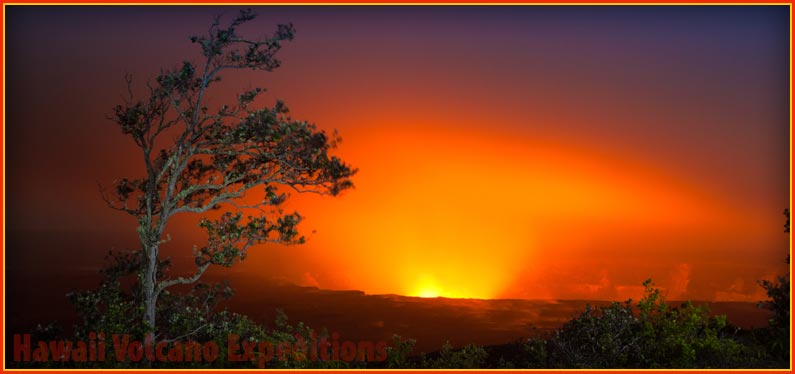Inside the Explosive Big Island Volcanoes
Synonymous with paradise, Hawaii serves up a cocktail of sandy beaches, lush green jungles and technicolor coral reefs. But these aren’t its only talents. Beyond its thriving tourism scene, the Hawaiian archipelago is underpinned by millions of years of volcanic history.
Interestingly, the Big Island is the youngest of them all, with geologists estimating that it’s just 300,000 years old. Yet as an active volcanic island, it’s still enlarging which makes it one of the most fascinating places to immerse yourself in Mother Nature’s tectonic ferocity.

The Big Island is home to the aptly named Volcanoes National Park, where a pair of active volcanoes dominate the landscape. Named Kilauea and Mauna Loa, the duo smoke, steam and bubble away… For those wanting to get up close and personal with the not so dormant giants, hiking expeditions or driving tours are a fantastic option.
Most tours kick off in Volcano Village, which lies at the foot of the national park. For even the most seasoned of geologists, it’s impossible not to feel inspired by the rugged landscapes of the park’s volcanic deserts.
The biggest mountain on earth
Most assert that Everest is the tallest mountain on Earth, when in fact it’s the Big Island’s Mauna Loa. With a volume mass of 19,999 cubic miles, it towers 56,000 feet above the sea floor. This makes it 27,000 feet taller than Everest. Forget Base Camp. If you want to set foot on the tallest mountain on the planet, make a pilgrimage to Volcanoes National Park.
Red hot craters
But the otherworldly scenery isn’t all the park has to offer. On lava flow surface hikes, guides tiptoe through volcanic rivers, and offer adventurous guests the chance to peer into boiling craters like Halema’uma’u. Guides know the park inside out, and have superlative knowledge into the park’s most active areas where signs of current flow.

Steam vents
One of the park’s most stifling attractions, the steam vents of the Kīlauea Caldera are a result of ground water seeping down to hit the hot volcanic rocks that lie beneath the earth’s surface. It then condenses, and is pushed back up as steam. Because of the scorching earth that lies just a few feet below the surface, the Kīlauea Caldera is sparse and barren as trees simply can’t survive.
Lava tubes
Ultra-fragile, the Puapo‘o Lava Tubes offer amazing insight into the path of molten rock that’s spewed out of volcanoes like Kilauea and Mauna Loa. The natural conduits are formed when lava moves beneath the hardened surface of a lava flow, and creates tubular passages. After the rock cools the tubes are immortalized, and beckon to be explored.

As monuments to the Earth’s billion-year-old origins, volcanoes are living, breathing, smoking proof that primordial forces are more powerful than anything else on the planet. Volcanoes National Park is one of the only places on Earth to experience these forces at work, and gain a firsthand glimpse at active giants at work.


